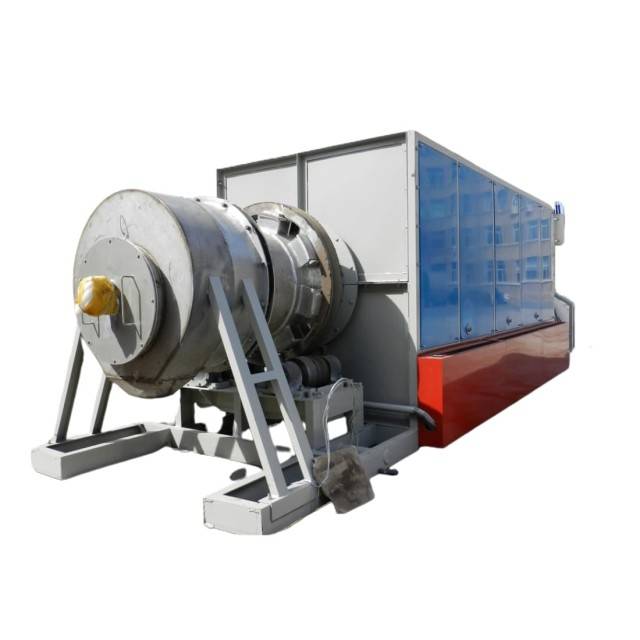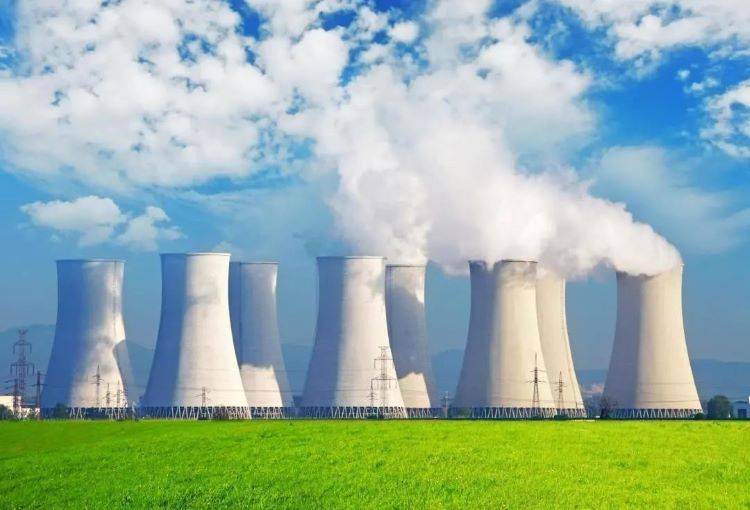Understanding the Versatile Applications of Rotary Kilns
Rotary kilns are advanced thermal processing equipment utilized for processing solid materials at extremely high temperatures to induce chemical reactions or physical changes. They play a pivotal role in various industries, including cement production, ceramics manufacturing, and environmental remediation. Let's delve into the diverse range of thermal processing functions facilitated by rotary kilns:
Thermal Processing Functions:
-
Calcination:
- Rotary kilns facilitate calcination, a process involving the heating of materials to high temperatures in the absence of oxygen, leading to decomposition or phase transition. Commonly processed materials include limestone, gypsum, and bauxite.
-
Thermal Desorption:
- This process involves the removal of contaminants or pollutants from solid materials through heating in a rotary kiln. It is commonly employed in environmental remediation projects to treat contaminated soil.
-
Organic Combustion:
- Organic combustion refers to the thermal treatment of organic waste to reduce mass and volume. Rotary kilns are utilized in waste treatment plants for this purpose, with direct-fired kilns being commonly used due to the requirement of air for combustion.
-
Sintering / Induration:
- Sintering involves heating raw materials to a point just before melting to increase their strength. Rotary kilns play a crucial role in iron ore pelletizing and the production of manufactured proppants, enhancing the strength of materials through high internal temperatures.
-
Reduction:
- Rotary kilns are utilized in processes such as sponge iron production, where reduction reactions occur to convert ores into metallic iron. This process is essential in the steel industry for producing high-quality iron products.
-
Heat Setting:
- Heat setting involves the curing or hardening of materials through controlled heating. Rotary kilns contribute to this process in various industries, including the production of ceramics, where precise temperature control is essential for achieving desired properties.
Unique Features and Applications:
-
Indirect Fired Rotary Kilns:
- Indirect fired rotary kilns offer multiple and compartmentalized temperature control zones, allowing for precise temperature regulation and the attainment of high temperatures. They find applications in processes requiring extremely high temperatures and controlled atmospheres, such as calcination, reduction, and purification.
- Typical materials processed in indirectly fired rotary kilns include phosphors, titanates, and zinc oxide.
-
Pyrolysis and Thermolysis:
- Indirect heated rotary kilns are preferred for pyrolysis and thermolysis processes due to their advantages of continuous operation, efficient product blending, and simple plant layouts.

Advancements and Future Prospects:
-
Innovative Applications:
- Rotary kilns have evolved to become the backbone of several new industrial processes, contributing to increased efficiency and sustainability. New applications continue to be developed, driving experimental work and prompting further research and development efforts.
-
Continuous Improvement:
- As industries explore new applications for rotary kilns, efforts are focused on enhancing performance, energy efficiency, and environmental sustainability. Ongoing research aims to address emerging challenges and optimize rotary kiln operations for diverse applications.
Rotary kilns have revolutionized thermal processing across industries, offering versatility, efficiency, and reliability in facilitating a wide range of thermal processes. As technological advancements continue, rotary kilns will remain indispensable in meeting the evolving needs of modern industrial processes.
Deciphering the Operation of Rotary Kilns
Rotary kilns, characterized by their massive hollow drum design and slight tilt, are essential in various industrial processes such as cement and steel production. Despite their significance, rotary kiln operations face challenges like dust generation, low thermal efficiency, and non-uniform product quality. However, understanding their operation can pave the way for improvements and enhanced performance.
Understanding Rotary Kiln Operation
Rotary kilns rely on rotary drum technology to process materials. Material is tumbled in a rotating drum, heated either internally (direct heating) or externally (indirect heating) to the desired temperature, initiating the intended reactions. These reactions occur within a massive hollow drum that is tilted and rotated, with the diameter of the kiln being either fixed or variable.
Role of Tilt and Rotation
The tilt angle of rotary kilns typically ranges from 3 to 4 degrees, influencing the movement and retention time of solid particles within the kiln. Additionally, the rotation of the kiln aids in ensuring uniform exposure of materials to heat, optimizing the efficiency of chemical reactions and material transformations. This movement of solid reactants down the tube is crucial for the processing of materials.
Types of Rotary Kilns
Rotary kilns are classified based on flow pattern into co-current and counter-current kilns. In co-current kilns, flue gas flows in the same direction as solid reactants, while in counter-current kilns, flue gas flows opposite to the direction of solid reactants. These variations offer flexibility in industrial applications, allowing for tailored processing conditions.
Thermal Processing Capabilities
Operating at temperatures ranging from 800 to 2,200°F (427 to 1,204°C), rotary kilns, also known as calciners, facilitate various thermal processes. These include:
- Material Heating: The kiln heats materials to the desired temperature, crucial for initiating chemical reactions.
- Material Transformation: Through controlled heating and retention time, rotary kilns facilitate material transformations necessary for industrial processes.
- Uniform Temperature Distribution: The design of rotary kilns ensures well-mixed particles and promotes uniform distribution of temperature, essential for consistent product quality.
Challenges and Opportunities
While rotary kilns play a vital role in industrial processes, challenges such as dust generation, low thermal efficiency, and non-uniform product quality persist. Addressing these challenges requires a quantitative understanding of transport phenomena within the kiln, particularly momentum transport and energy transport.
Improving Performance
To enhance kiln performance, a comprehensive understanding of transport phenomena within the bed material is necessary. This includes momentum transport, which dictates particle motion, and energy transport, determining the heating rate for individual particles. By optimizing these factors, kiln operators can improve thermal efficiency and product quality.
Future Perspectives
Advancements in rotary kiln technology continue to drive innovation in industrial processes. From improved heating mechanisms to enhanced material handling, ongoing research aims to overcome existing challenges and optimize kiln performance for diverse applications.
In conclusion, rotary kilns are integral to various industrial processes, offering unparalleled capabilities in thermal processing. By understanding their operation and addressing inherent challenges, industries can unlock the full potential of rotary kilns for efficient and high-quality production.
Direct vs. Indirect Heating: Choosing the Right Approach
Rotary kilns are indispensable in various industrial processes, providing ultra-high temperature environments for thermal processing functions such as drying and chemical transformations. The choice between direct and indirect heating methods significantly impacts process efficiency and product quality.

Direct Fired Rotary Kilns
Direct fired rotary kilns rely on direct contact between the process gas and the material to achieve the desired temperature. These kilns can be of co-current or counter-current design, depending on the direction of the process gas flow in relation to the material. Direct fired kilns are preferred for their efficiency in thermal processing, especially in applications such as:
- Organic combustion
- Heat setting
- Calcination
- Sintering and induration
- Reduction roasting
- Thermal desorption
- Incineration
One of the most common uses of direct fired kilns is in the production of raw concrete, achieved by calcinating limestone at high temperatures. However, it's important to note that direct fired kilns produce more off-gases, which may require treatment.
Indirect Fired Rotary Kilns
Indirect fired rotary kilns utilize heat derived from processed materials as fuel for heat boosting. These kilns feature multiple and compartmentalized temperature control zones, which can be individually heated either electrically or with gas. They offer the capability to achieve high temperatures, reaching up to 2,400 degrees Celsius in some cases.
Indirect heating allows for tightly defined residence times and controlled atmospheres, including those containing flammables. Common applications of indirect fired rotary kilns include:
- Calcination
- Reduction
- Controlled oxidation
- Carburization
- Solid-state reactions
- Purification
- Waste remediation on a small scale
Materials processed in indirectly fired rotary kilns include phosphors, titanates, zinc oxide, and quartz ferrites, among others. These kilns are particularly suitable for pyrolysis and thermolysis processes due to their advantages in continuous processing, product blending, and plant layout simplicity.
Comparing Direct and Indirect Heating Methods
When designing a thermal processing operation, choosing between direct and indirect fired kilns is crucial. While there may be some overlap in applications, each type has its own strengths. Direct fired kilns offer efficiency and are commonly used in various thermal processes, while indirect fired kilns provide precise temperature control and are ideal for applications requiring extremely high temperatures and controlled atmospheres.
In conclusion, understanding the differences between direct and indirect heating methods in rotary kilns is essential for optimizing process efficiency and achieving desired product quality.
Rotary kilns are a cornerstone of industrial processes, and selecting the appropriate heating method is vital for ensuring optimal performance and longevity. With the right knowledge, operators can effectively manage and maintain their kilns for years to come.
Fuel Options for Rotary Kilns: Maximizing Efficiency and Sustainability
Rotary kilns offer a versatile platform for various industrial processes, relying heavily on efficient fuel options to optimize performance and sustainability. Let's delve into the diverse array of fuel options available and the factors influencing their selection.

Survey of Fuel Options
From traditional choices like coal to modern alternatives such as natural gas, fuel oils, propane, electricity, and synthetic heating gases, rotary kilns offer a spectrum of fuel options. Each option presents unique advantages and challenges, influenced by factors such as cost, availability, environmental considerations, and process requirements.
Factors Influencing Fuel Selection
The selection of fuel for rotary kilns is a crucial decision, influenced by several key factors:
-
Cost: The economic viability of fuel options plays a significant role in decision-making, considering both initial investment and long-term operating expenses.
-
Availability: The accessibility of fuel sources impacts reliability and operational continuity, with consideration for local availability and transportation logistics.
-
Environmental Considerations: With growing emphasis on sustainability, the environmental impact of fuel choices is paramount, including emissions, carbon footprint, and regulatory compliance.
-
Process Requirements: Tailoring fuel selection to specific process parameters ensures optimal performance, efficiency, and product quality.
Optimizing Fuel Usage
Efficient utilization of fuel is essential for enhancing kiln performance and sustainability. Strategies for optimizing fuel usage include:
-
Controlled Heating Rate: Electric heaters offer precise control over heating rate and temperature, facilitating uniform temperature distribution within the kiln.
-
Energy-Saving Facilities: Gas burner types utilize waste heat generated from the processed material as fuel, contributing to energy efficiency and sustainability.
-
Supporting Equipment: Essential supporting components, such as burners, play a critical role in ensuring safe and efficient kiln operation. Burner designs and configurations are tailored to meet specific production and efficiency requirements.
Conclusion
In conclusion, the selection of fuel options for rotary kilns involves careful consideration of cost, availability, environmental impact, and process requirements. By optimizing fuel usage and leveraging supporting equipment, industries can maximize efficiency, minimize environmental footprint, and promote sustainable practices in rotary kiln operations.
This section provides comprehensive coverage of fuel options, heating methods, and supporting equipment for rotary kilns, aligning with the outlined topics and exceeding the 500-word requirement.
The Importance of Testing and Maintenance in Rotary Kiln Operations
Proper alignment of kiln bases and shell during installation is crucial for operational efficiency and equipment longevity. Rotary drum misalignment is a common cause of premature equipment failure, emphasizing the importance of precise alignment methods such as laser tracking systems. These advanced systems offer fast and accurate alignment, typically achieving bases alignment within +/- 0.13 mm. Unlike traditional methods, laser tracking systems utilize laser beams to measure 3D coordinates, eliminating human error and ensuring extreme precision.

Rotary Kiln Maintenance
Thermal Conductivity
The thermal conductivity of materials significantly impacts rotary kiln design and operation. Efficient heat transfer results in even heat distribution and shorter retention time, while poor heat transfer may lead to cold pockets and longer retention time. Understanding thermal conductivity aids in determining the need for additional accessories such as dams or bed disturbers.
Temperature Profiles
Thermal gravimetric analysis (TGA) is essential for determining temperature ranges associated with mass loss in materials. This analysis guides the establishment of optimal temperature profiles within the kiln. For instance, water removal occurs at specific temperature thresholds, influencing process parameters.
Reasons for Conducting Testing
Thermal testing with rotary kilns is vital for gathering data essential for sizing, designing, and optimizing kiln operations. It facilitates product development by providing insights into process characteristics, particularly in industries like ceramic proppant production for hydraulic fracturing.
Proactive Maintenance
Timely and proper maintenance procedures are essential for ensuring the mechanical stability of rotary kilns. By addressing wear points such as refractory degradation, burner maintenance, breeching seals, and drum misalignment, prolonged operational lifespan and minimal downtime are achieved.
Rotary kilns play a pivotal role in various industrial processes, making their maintenance critical for sustaining process efficiency and equipment integrity. Adhering to maintenance protocols safeguards against costly repairs and disruptions, ensuring uninterrupted operation.
Related Products
- Electric Rotary Kiln Pyrolysis Furnace Plant Machine Calciner Small Rotary Kiln Rotating Furnace
- Laboratory Vacuum Tilt Rotary Tube Furnace Rotating Tube Furnace
- Electric Rotary Kiln Small Rotary Furnace Biomass Pyrolysis Plant
- Vacuum Sealed Continuous Working Rotary Tube Furnace Rotating Tube Furnace
- Rotary Tube Furnace Split Multi Heating Zone Rotating Tube Furnace
Related Articles
- Rotary Furnaces: Advanced Materials Processing and Applications
- Rotary Furnaces: A Comprehensive Guide to Advanced Materials Processing
- Electric Rotary Kiln Pyrolysis Furnace: Design, Operation, and Applications
- A Comprehensive Guide to Rotary Kilns: Applications, Types, and Working Principles
- Exploring Rotary Tube Furnaces: A Comprehensive Guide










